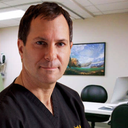Posted underEyelid Surgery q&a
Transconjunctival Blepharoplasty and Fat Grafting for Hollow Eye Area?
I am a 50 year old Asian. Have consulted a plastic surgery regarding removal of eye bag. He recommends me to do a transconjunctival eyelid surgery (incision inside) because there is not much excess skin to remove. In addition, he suggested a fat transfer to correct hollow sunken eye area after removing the eye bag.Is internal incision eye bag surgery a better option compared with external incision and is recovery is much faster? Does it also make sense to transfer fat immediately after the surgery to correct hollow and sunken eye?Your input is appreciated.
Answers (14)
From board-certified doctors and trusted medical professionals
Dr. William Bruno, MD

Dr. William Bruno, MD
Board Certified Plastic Surgeon
Answer
Dr. Evan Ransom, MD, FACS

Dr. Evan Ransom, MD, FACS
Board Certified Facial Plastic Surgeon
Answer
Dr. Andrew Miller, MD

Dr. Andrew Miller, MD
Board Certified Facial Plastic Surgeon
Answer
Dr. Brent Moelleken, MD

Dr. Brent Moelleken, MD
Beverly Hills Plastic Surgeon
Answer
Dr. Kenneth D. Steinsapir, MD

Dr. Kenneth D. Steinsapir, MD
Oculoplastic Surgeon, Board Certified in Ophthalmology
Answer
Dr. Tanveer Janjua, MD

Dr. Tanveer Janjua, MD
Board Certified Facial Plastic Surgeon
Answer
Dr. William Portuese, MD
Dr. William Portuese, MD
Board Certified Facial Plastic Surgeon
Answer
Dr. Steven Wallach, MD
Dr. Steven Wallach, MD
Board Certified Plastic Surgeon
Answer
Dr. Marc Schneider, MD
Dr. Marc Schneider, MD
Board Certified Plastic Surgeon
Answer
More Eyelid Surgery Questions
See all Eyelid Surgery Q&AWE SEND PRETTY
EMAILS
What’s trending? Who’s turning heads? Which TikTok myths need busting? We’ve got you. No fluff, no gatekeeping—just real talk. Get our free, unfiltered newsletter.